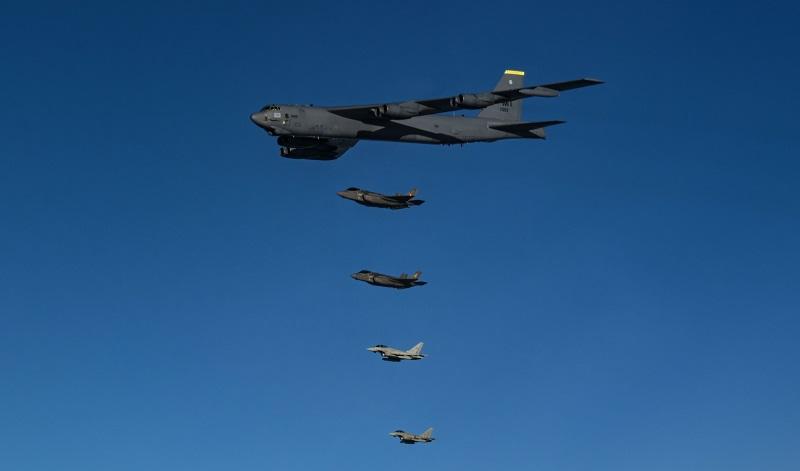Allied F-35s and Eurofighters from Italy and F-16s from Greece escorted two U.S. Air Force B-52s throughout the Mediterranean Sea and Black Sea Region while integrating with Allied Joint Terminal Attack Controllers (JTACs) from Romania March 7, 2022. The B-52s took off from RAF Fairford, and flew over central Europe to practice air-land integration drills with Romanian JTACs; this integration provided vital Allied Close Air Support training. Before returning to base, the B-52s practiced bilateral operations with Italian and Greek fighters. The Allied aircraft worked out fighter-bomber escort procedures and communications.
NATO is a highly capable, political & military Alliance that collectively provides the military forces necessary to ensure security for our nations through an effective, blend of operations, missions, tasks and activities within Alliance territory. Given the inherent speed, flexibility, and range of strategic bombers, Bomber Task Force missions highlight Allied capabilities and commitment to a cohesive Alliance. Integration between fifth generation fighters and legacy bombers ensure Allied interoperability that directly contributes to providing a robust deterrence and defence of the Alliance.

The Boeing B-52 Stratofortress is an American long-range, subsonic, jet-powered strategic bomber. The B-52 was designed and built by Boeing, which has continued to provide support and upgrades. It has been operated by the United States Air Force (USAF) since the 1950s. The bomber is capable of carrying up to 70,000 pounds (32,000 kg) of weapons, and has a typical combat range of more than 8,800 miles (14,080 km) without aerial refueling. The B-52 completed 60 years of continuous service with its original operator in 2015. After being upgraded between 2013 and 2015, the last airplanes are expected to serve into the 2050s.
The ability to carry up to 20 AGM-69 SRAM nuclear missiles was added to G and H models, starting in 1971. To further improve its offensive ability, air-launched cruise missiles (ALCMs) were fitted. After testing of both the USAF-backed Boeing AGM-86 and the Navy-backed General Dynamics AGM-109 Tomahawk, the AGM-86B was selected for operation by the B-52. A total of 194 B-52Gs and Hs were modified to carry AGM-86s, carrying 12 missiles on underwing pylons, with 82 B-52Hs further modified to carry another eight missiles on a rotary launcher fitted in the bomb-bay.















